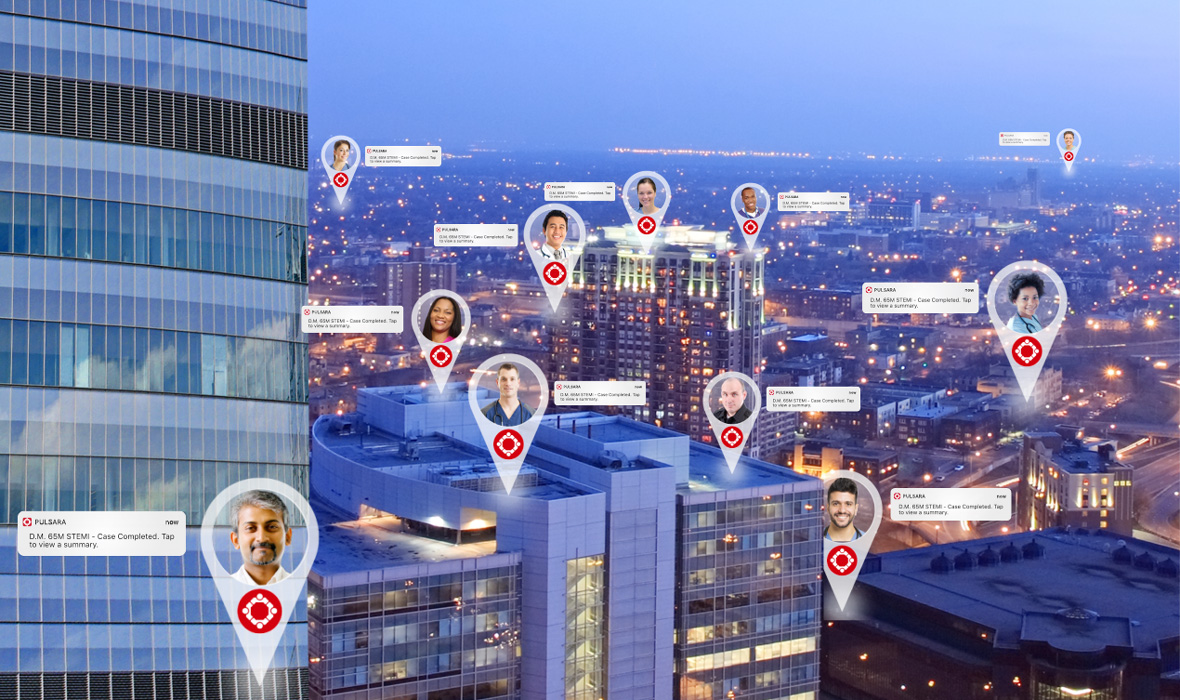Baker to Vegas: Leveraging Pulsara to Manage a Planned Event
Although they have the advantage of prior awareness and preparation, large-scale planned events pose unique challenges for emergency management...

As our processes and equipment in EMS continue to evolve, they empower first responders to provide better care for patients. But in order to provide the BEST care, our communication technologies must also evolve and keep pace.
If you’ve ever felt the frustration of having to repeat the radio report for the umpteenth time, or worse, watched harm reach your patient because of a simple miscommunication, picture this instead:
You arrive on scene at the rural home of a patient complaining of chest pain. Suspecting a STEMI, you hook him up to your ZOLL X Series monitor. Seconds later, the result shows a pattern consistent with your suspicion. With a tap on the Pulsara ONE platform, you send an alert to the ED at the nearest hospital, letting them know that you have a STEMI patient en route and that your ETA is 24 minutes.
From the back of the ambulance, you tap again to share a diagnostic quality 12-lead ECG directly from the ZOLL monitor to the hospital.
You wind up the remote mountain highway, afraid that you’re about to lose service. But then, you remember Pulsara is integrated with Allerio — so you have service 30 miles past where any cell provider’s coverage reaches. Even in this “dead zone,” you can see you’ve gotten a new alert — the cardiologist has received the ECG in real time, and confirmed it’s a STEMI.
Coming out of the mountains, you quickly pass through the next city. It’s homecoming for the local football team, and your route goes right through the crowded campus, where thousands of people are struggling to post to Instagram and live stream to Facebook.
You check your phone, expecting to see the signal struggling, but it does no such thing — your service is preempted and prioritized by AT&T’s FirstNet. You are even able to answer a live-streaming video call from the cardiologist on Pulsara, who directs you to proceed directly to the cath lab — do not stop at the ED.
Minutes later, you’re wheeling your patient into the cath lab. On your way out, you almost fall back into old habits and stop to give a run report. But then, you remember that with Pulsara’s newly adopted NEMSIS format, the need for dual data entry has been eliminated. All the information you put into Pulsara is already in the ePCR, and will be automatically stored in the hospital’s EHR.
You're heading out on your next call when you get feedback from the cath lab via Pulsara - patient had a 100% LAD lesion, D2B time of 21 minutes, patient is doing well.
Interoperability and networked communication connect teams when it matters most. The future of healthcare communication is here.

Although they have the advantage of prior awareness and preparation, large-scale planned events pose unique challenges for emergency management...

For Those Who Love a Good "Oopsie!" At Pulsara, we pride ourselves on enabling secure, HIPAA-compliant communication for healthcare teams. But let’s...

March Recap A New Integration: Improving Data Management, Streamlining Workflows, and Improving Care CoordinationOnly a few days ago, we announced...